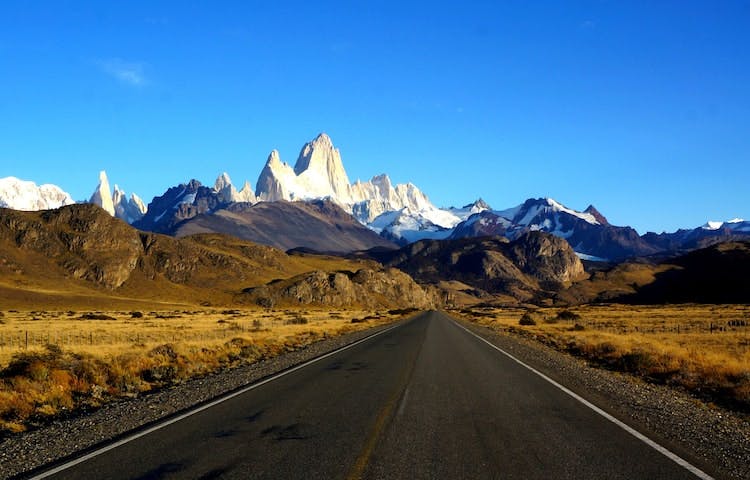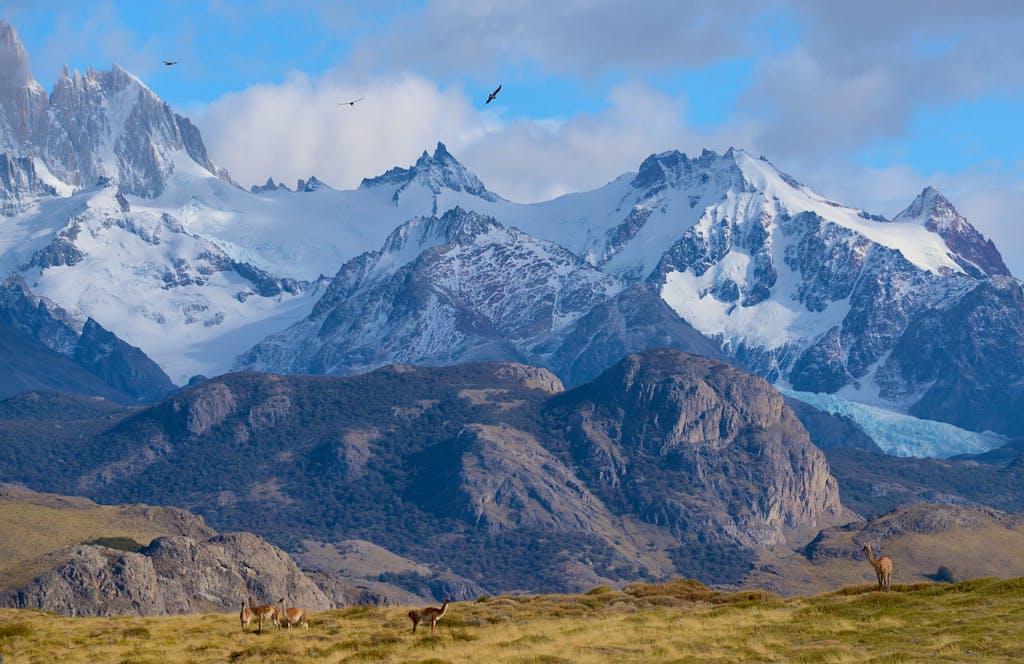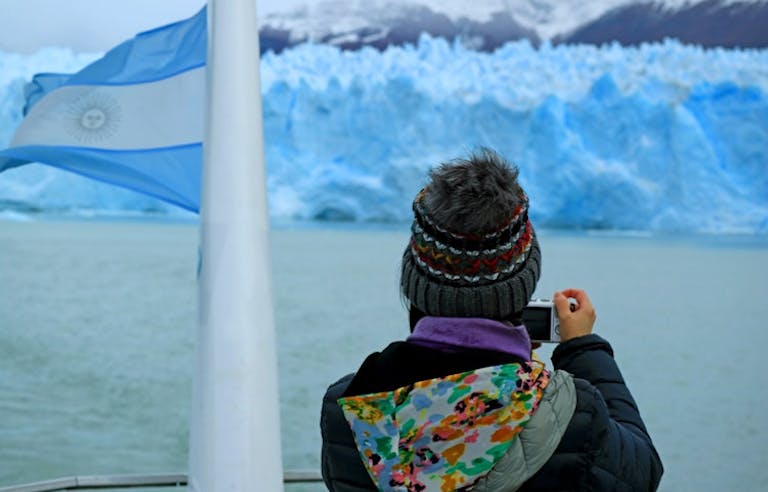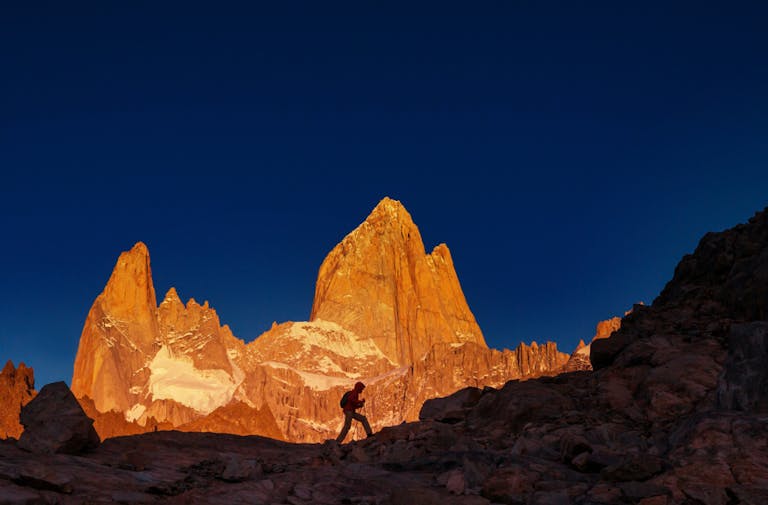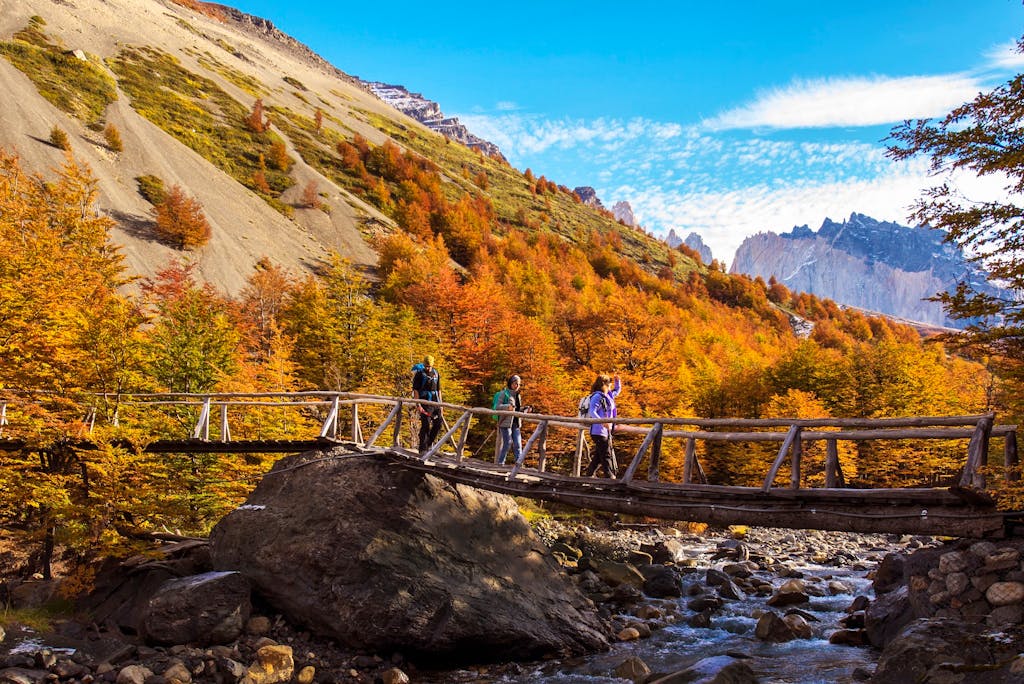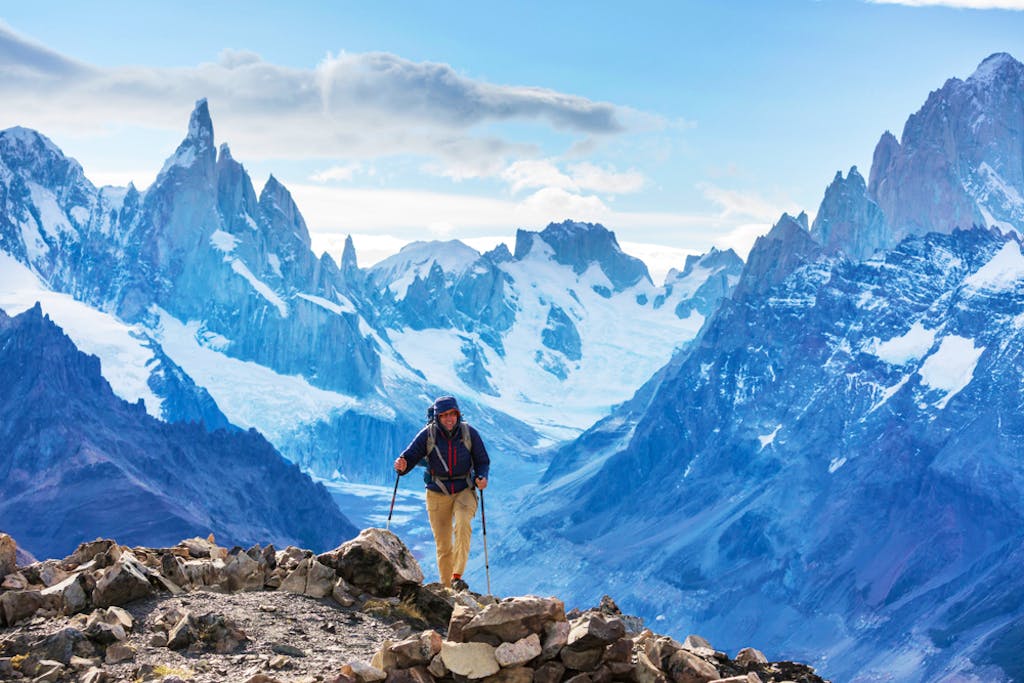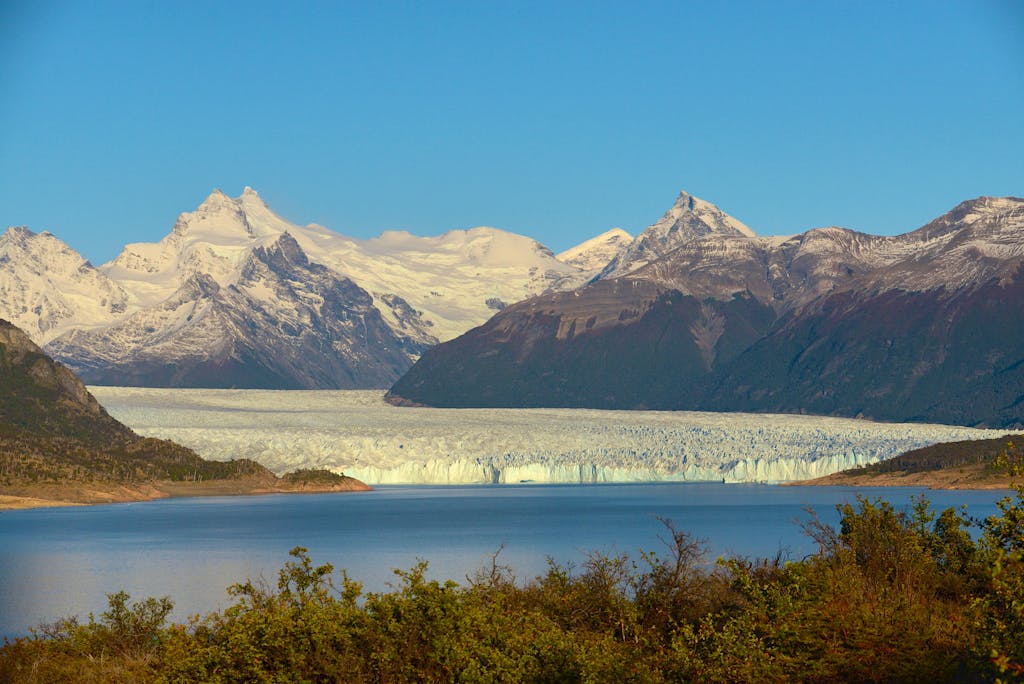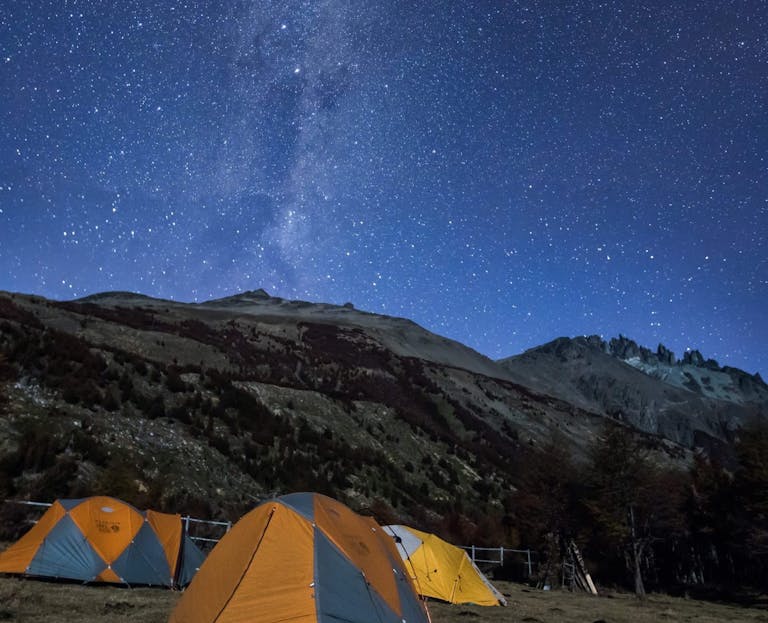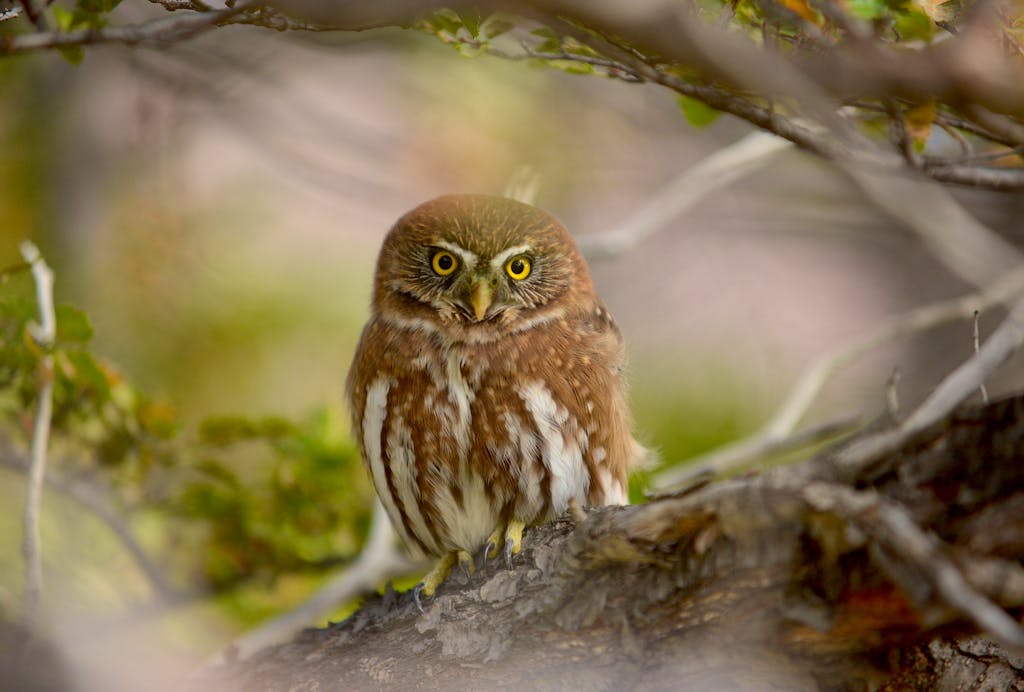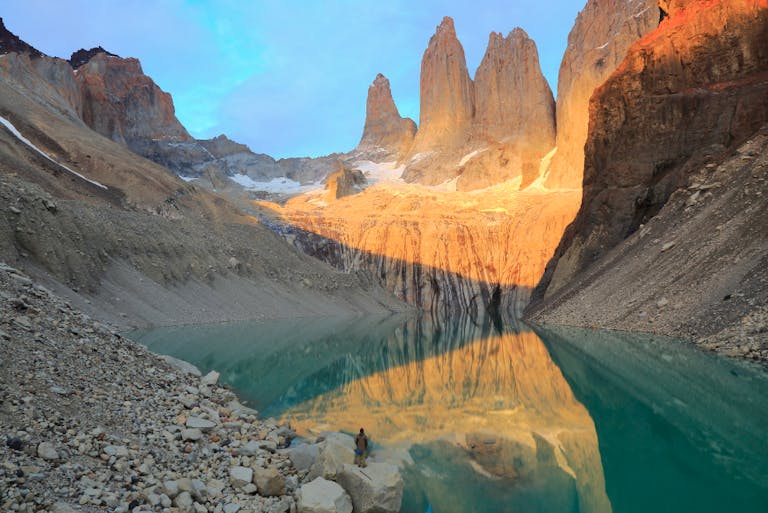Why Visit Patagonia?
Located at the southern end of South America, Patagonia is one of the most beautiful places on the planet. The landscapes, the culture, the food, and of course, the hiking, make for an absolutely incredible adventure. Every year, Patagonia attracts trekkers and thrill-seekers globally, offering unique trails and views that are unparalleled elsewhere.
Governed by Chile and Argentina, Patagonia was mostly explored by experienced backpackers seeking to go off the grid, but in the second half of the 1900s, tourism became a major part of the local economy.
Guided hikes and treks, incredible cruises and making lifelong memories are now an essential part of the Patagonia experience. At MT Sobek, we offer a variety of adventure trips geared towards all skill levels to help you explore this area of the world.
Hiking and trekking adventures are among the most popular trips offered in the area and for good reason. Snowcapped mountains, incredible glaciers, amazing lakes and rivers are just some of the things that Patagonia offers to its visitors.
We have no doubt that once you visit, you’ll want to immediately start planning your next Patagonia trekking tour!
What to Know Before You Go to Patagonia
Planning a hiking trip to Patagonia can be difficult if you’ve never been to South America before. Understanding the different hiking trails and guided tours will help you in the long run before you even step foot on the ground. We highly recommend using an adventure travel company to help you plan everything correctly so that you can take in as much of beauty of the region as you possibly can.
Once you have your trip booked there are some things you should know before setting off on your adventure. Here is everything you need to go before you plan a multi-day hiking trip to Patagonia!
Overview
- Climate in Patagonia
- What to Wear and What to Pack for Patagonia
- Guided Tour vs. Walk On Your Own in Patagonia
- Popular Hiking Trails in Patagonia
- Be Mindful of the Wildlife and the Environment
- In Conclusion
1. Climate in Patagonia
Understanding what the climate is like in Patagonia, as well as the terrain that you’ll be experiencing, will help you understand how your days will be spent, what to wear and what you should expect to pack.
While Patagonia is located in South America, it’s located at the southern-most point of the continent. This means that you’re going to be further away from the equator and thus the temperatures are not going to be hot like you may expect from South America.
Although Patagonia is situated in South America, it’s found at the extreme southern end of the continent. This implies that it’s much farther from the equator, and therefore, the temperatures aren’t going to be as warm as one might typically anticipate from South America.
Knowing the places you’ll be visiting in Patagonia can provide a clearer picture of what to bring and what to wear.
2. What to Wear and What to Pack for Patagonia
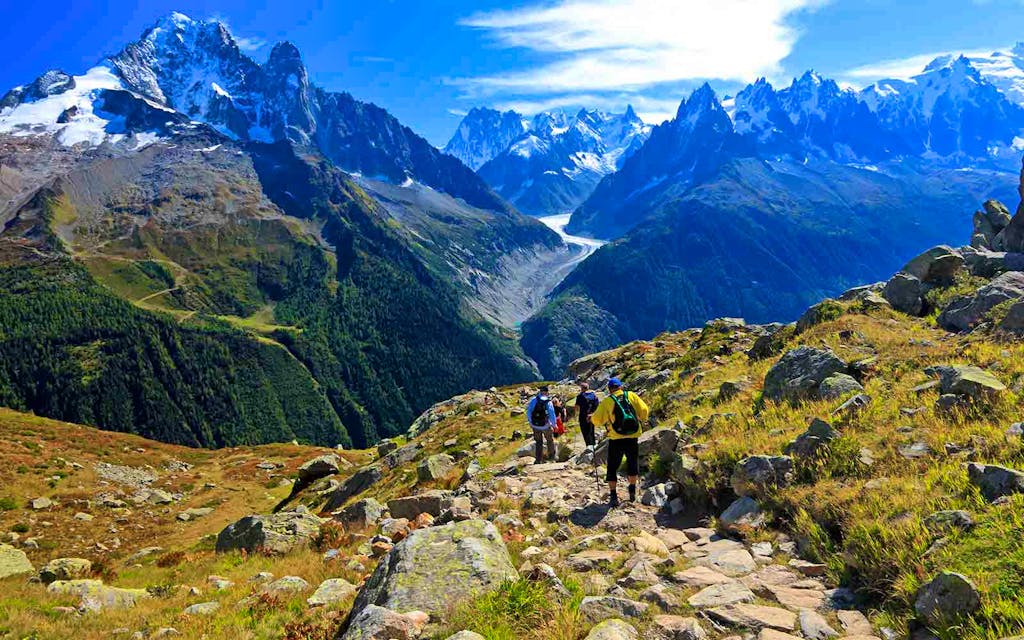
When hiking Patagonia the key is to make sure you have enough clothes to help you remain comfortable no matter what weather you run into. Layered clothing is essential, allowing you to adjust accordingly throughout the day. Between elevation changes, environmental factors and unpredictable weather patterns, you’ll want to make sure you’re fully prepared for anything.
While out on your hikes be sure to have a good pair of hiking boots as well as comfortable/warm socks. The layering of your pants and shirts/jackets is also very important so that you’re able to take off layers as you get warm and add layers as you get cold.
Bringing a backpack with you is essential so you can carry extra items as well. Extra socks and waterproof clothing, first-aid kit, water and snacks will help ensure that you’re hydrated and energized while never being cold or wet.
A Helpful Guide to Packing for Your Patagonia Trip
- Bring at least one pair of sunglasses – ideally with a hard case for protection!
- Pack a hydration pack instead of a water bottle, if you prefer.
- A small bandana or neck buff is useful, especially in Patagonia’s windy conditions.
- Bring two pairs of gloves – one lighter weight pair, one thicker and waterproof pair.
- Bring sunscreen.
- Bring hand sanitizer.
- A packable light jacket is important as a windbreaker.
- A rain cover for your backpack is essential.
- Carry a warm hat.
- Carry a sun hat.
- Always carry a rain jacket – must be fully waterproof!
- Always carry waterproof rain pants, too!
- A puff jacket keeps you warm when the temperature suddenly drops or during downhill portions.
- Lastly, bring trekking poles! You’ll carry them in hand, so no need to fit them inside your daypack.
3. Guided Tour vs. Walk on Your Own in Patagonia?
If you’re booking your trip without the help of an adventure travel expert, one of the things you’ll want to determine is if you want to experience these hikes on your own or if you would prefer to have a guided tour.
Both experiences have their pros and cons, so it’s all up to how you want your journey to go. If you’re looking to go on an adventure by yourself, or with your own group of friends, and you are comfortable reading a map and understanding trail hiking, then self-guided is the way to go.
You can go at your own pace, take time to relax and enjoy the scenery and experience the trip as you want to experience it. The more popular trails in Patagonia are very well marked and you should not be worried about getting lost or straying off track.
If you’re the type of person that doesn’t want to have to pay attention to signs or worry about taking a wrong turn, then a guided tour may be more your speed. Most guides that you’ll find for these hikes through Patagonia are well versed in all aspects of the trails from cool things to be on the lookout for, wildlife in the area, plant life and more.
Guided tours can be more of an educational experience when compared to solo hikes, but there are many apps and books you can bring along on a solo trip to keep you informed as well.
4. Popular Hiking Trails in Patagonia
Looking to go trekking in Patagonia? There are a wide variety of trails to hike throughout Patagonia, so understanding which trail is right for you before you head out is very important. Some trails may be out of reach depending on the locations that you plan to stay, but no matter where you are, you’re always going to find a trail that will give you some of the most amazing scenic views you’ve ever seen.
Two of the most popular trails in Patagonia are known as The W Trek through Torres Del Paine National Park and The O Circuit, which includes The W Trek and adds another 50 kilometers to your journey through the backcountry.
If you’re looking to experience the best parts of Patagonia while hiking, then you can’t go wrong with either of these two adventures. Both options offer the ability to camp throughout the hikes or shack up in more hotel-like accommodations.
You can experience Patagonia exactly how you want to experience it, sleeping in a tent in your sleeping bag amongst the stars or relaxing each night in a more comfortable bed. You can absolutely tailor your experience to fit your needs and desires, just be sure to plan your nights ahead of time. You don’t want to be caught unprepared when night falls, it can get cold outside.
Researching which hiking trails and sleeping accommodations you want to experience before you finalize your trip is extremely important as it will dictate all aspects of the trip itself.
5. Be Mindful of the Wildlife and the Environment
Most adventure travelers know that one of the most important rules when hiking, camping and backpacking through these natural regions is that you leave the area better than you left it and you don’t disturb anything that isn’t meant to be disturbed.
Staying on the marked trails and campsites will help ensure that the environment around you stays as nature intended. Going off the path or camping where you’re not supposed to can lead to irreparable damage, not to mention increased risk of danger.
Patagonia is known for the Patagonia puma, which roam the backcountry in search of food and shelter. In fact, the Torres del Paine National Park is home to between 50-200 pumas while Patagonia itself has the highest density of pumas anywhere in the world.
While the pumas are not known to attack humans, and generally keep to themselves away from the highly trafficked trails, it’s still important to know that they are out there and could be dangerous if you venture away from the marked paths.
Hiking Patagonia is an extremely beautiful experience, so you should leave the trails and campsites better than you found them so that the next groups of travelers can experience the beauty just as you did. Cleaning up your garbage and your campsite is a great way to ensure the National Park continues to amaze visitors for years to come. View MT Sobek’s Patagonia Active Adventures.
In Conclusion
There’s almost nowhere in the world as beautiful as Patagonia when it comes to hiking trails. The glaciers, mountains, lakes and valleys are among some of the incredible views you’ll get to discover as you make your way through vast landscape.
Being prepared for the trails, and knowing to what to expect, can make all the difference between a decent trip and an amazing trip. Do your research before booking any flights or hotels, understand where the trails run and how long they may take you, determine your level of comfort when it comes to more advanced trails and investigate how the weather patterns can change between the different areas of Patagonia.
As long as you’re prepared for this once-in-a-lifetime hiking adventure through Patagonia, we guarantee that you will have an incredible time that will resonate with you for the rest of your life.
Need travel inspiration?
- Photo Gallery Reflections of Patagonia
- Travel Essentials: What to Pack in Your Daypack for Your Patagonia Hike
- The 26 Most Unique Hotels on Our MT Sobek Trips in 2023
- MT Sobek Staff Picks: Expert Picks for Summer 2024
Ready to explore new travel destinations in 2024? Learn more about MT Sobek’s hiking and trekking adventures in Patagonia here.
